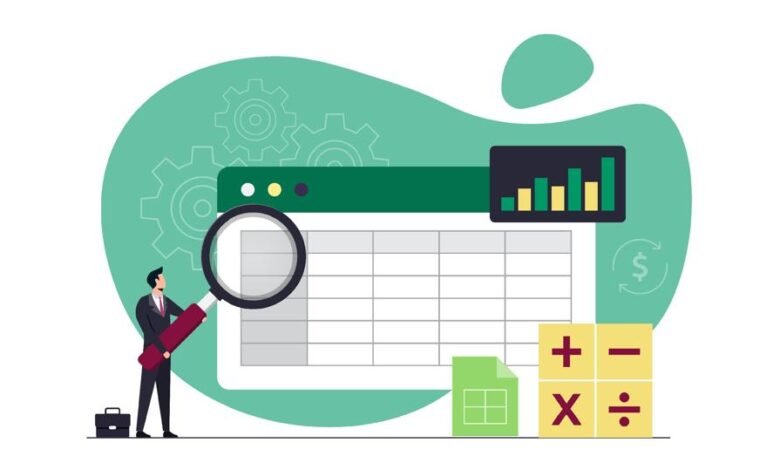What Will I Learn in a Microsoft Excel Online Course?

Microsoft Excel is a powerhouse tool in today’s digital world, used across industries for data management, analysis, and presentation. Whether you’re a beginner or a seasoned professional, an online Excel course can help you unlock the full potential of this software. From basic functions to advanced data analysis, online courses provide comprehensive training to elevate your skill set. In this article, we will explore what you can expect to learn in a Microsoft Excel online course and how these courses can boost your professional capabilities.
Understanding the Basics: Foundations of Excel
When you enroll in a Microsoft Excel online course, the first thing you’ll learn is the basic interface and functionality of the software. This foundational knowledge is crucial for any Excel user, regardless of your skill level. Beginners will explore essential concepts like:
- Navigating the Interface: Familiarizing yourself with Excel’s layout, including the ribbon, formula bar, and various toolbars.
- Creating and Managing Worksheets: How to open, save, and organize workbooks, manage multiple worksheets, and customize them to suit your needs.
- Basic Data Entry: Inputting text, numbers, and dates efficiently while learning about auto-fill features that save time.
- Formatting Cells: Applying fonts, colors, and borders to make your data more readable and visually appealing.
These core principles provide a solid base for all future learning. Even in an advanced Excel course, the ability to navigate the software quickly and efficiently is invaluable.
Data Management and Organization
One of Excel’s key strengths is its ability to organize and manage large volumes of data. As you progress in your online Excel course, you will dive deeper into data manipulation techniques, including:
- Sorting and Filtering: These tools allow you to quickly find and display relevant data within massive spreadsheets. You’ll learn to apply multi-level sorting, custom filters, and use color-based filters for a more efficient workflow.
- Data Validation: This feature restricts the type of data entered into a cell, ensuring that your spreadsheets remain accurate and consistent.
- Conditional Formatting: This function allows users to highlight cells or entire rows based on specific criteria, helping identify trends, outliers, or errors at a glance.
These skills are essential for anyone working with datasets, allowing you to keep your information well-organized and error-free.
Formula and Functions: The Heart of Excel
Formulas are one of Excel’s most powerful features, and learning them is key to mastering the software. A Microsoft Excel online course will teach you how to leverage formulas to automate tasks, reduce manual input, and perform complex calculations with ease. In this part of the course, you can expect to learn:
- Basic Functions: You’ll start with essential functions like SUM, AVERAGE, MIN, MAX, and COUNT, which are the building blocks of Excel calculations.
- Relative vs. Absolute Cell References: Understanding how cell references work is critical when copying formulas across multiple cells. You will learn how to apply both relative and absolute references to control how Excel handles cell data in formulas.
- Text Functions: These include LEFT, RIGHT, MID, and CONCATENATE, helping you manipulate and combine text strings within your dataset.
- Logical Functions: Learn to use IF, AND, OR, and NOT functions to create dynamic spreadsheets that respond based on certain conditions.
By mastering these skills, you’ll gain the ability to create more interactive, responsive workbooks tailored to your needs.
Introduction to Data Analysis
As your learning journey progresses, most online Excel courses will introduce you to data analysis techniques. This is where Excel truly shines as a tool for professionals working in finance, marketing, operations, and beyond. You’ll explore:
- Pivot Tables: Pivot tables are one of Excel’s most robust features, allowing you to summarize and analyze data from large datasets. You’ll learn how to create and customize pivot tables to generate insightful reports.
- Data Visualization: This involves creating dynamic charts and graphs that display your data in visually appealing ways. From pie charts to scatter plots, an advanced Excel course will cover various types of data visualizations and how to use them effectively.
- VLOOKUP and HLOOKUP: These functions help you search for specific data across large tables, streamlining the process of finding information.
- Data Models: In more advanced modules, you might encounter data modeling techniques using Excel’s Power Query or Power Pivot, enabling you to work with complex data from multiple sources.
These tools enable professionals to perform high-level data analysis without needing external software, providing significant value in any business environment.
Advanced Excel Techniques: Going Beyond the Basics
As you continue with an advanced Excel course, you’ll move beyond basic data entry and formula creation to more sophisticated techniques that help you automate tasks and streamline your workflow. Key areas of focus include:
- Macros: Macros allow you to automate repetitive tasks within Excel, reducing the need for manual data entry. You’ll learn how to record and execute macros, saving time and increasing efficiency in day-to-day tasks.
- Array Formulas: These powerful formulas allow you to perform complex calculations across multiple cells simultaneously, enabling you to tackle larger datasets with ease.
- Solver Add-in: The Solver tool can help you optimize your data by finding the best possible solution for a problem. It’s commonly used in financial modeling and operations management.
These skills are essential for professionals working with larger datasets or those looking to automate frequent tasks within Excel.
Collaborative Features and Cloud Integration
With Microsoft Excel now integrated into cloud-based systems like OneDrive and SharePoint, online Excel courses also focus on collaborative features. You will learn how to:
- Share and Collaborate in Real Time: Work on a document simultaneously with colleagues, making edits and updates that reflect instantly across all versions of the file.
- Track Changes: Keep an eye on the modifications made by collaborators, ensuring that nothing important slips through the cracks.
- Cloud Storage Integration: Save and access your workbooks from anywhere, at any time, using Microsoft OneDrive or SharePoint, making your work accessible even when you’re on the move.
These cloud integration skills are particularly valuable in today’s hybrid work environments where collaboration is crucial.
Conclusion: The Future is Excel-Proficient
A Microsoft Excel online course can unlock endless possibilities, regardless of your current expertise. From managing data and building complex formulas to automating tasks with macros and analyzing vast datasets with pivot tables, these courses equip you with the tools you need to excel in your career. By enrolling in an online Excel course, you’ll develop valuable skills that can improve productivity, streamline operations, and boost your employability.
Whether you are looking to sharpen your existing skills or pursue an advanced Excel course for professional development, the knowledge gained through these online programs will set you apart in today’s data-driven job market. So, why wait? Take advantage of the convenience and flexibility of online Excel courses to become proficient in one of the most widely used tools in the business world.




